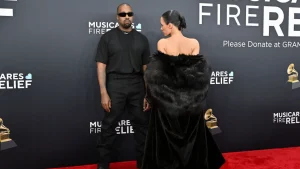
© Youness Hamiddine / Mawazine
The global reach of Middle Eastern and North African music has been steadily growing over the past few years, finds Spotify. Streams of artists from the region by listeners worldwide have increased nearly 40% annually since Spotify expanded into MENA countries in late 2018. And it’s not just Arab diaspora communities abroad fueling this growth – estimated at around 50 million people.
According to Akshat Harbola, Managing Director of Spotify for the Middle East, North Africa and South Asia regions, exported Arab talent tends to fall into two core profiles. Iconic veterans like Nancy Ajram, Fairuz, Amr Diab and Khaled who helped establish their genres. And newer artists either rooted in regional traditions or blending cultural sounds and languages in a globalized style.
Harbola cites three main drivers of the uptick. Classic artists offer nostalgic connections to homeland. Collaborations between MENA and international peers have “unlocked interest” by exposing new fanbases. Extensive international touring spreads the music directly. Furthermore, online viral hits can unexpectedly launch breakout artists like Jordanian-Palestinian Issam Alnajjar.
Social media is amplifying demand for diverse global sounds beyond top charts. The most streamed non-Arabic song abroad is “RAVE” by Algerian phonk producer Dxrk, popular in India, Turkey, and Latin America. Both original English tracks like Mishaal Tamer’s “Can’t Love Myself” and remixes of international hits featuring Arab talent like ElGrandeToto’s version of CKay’s “Love Nwantiti” feature highly.
Spotify actively promotes regional crossover, recently positioning ElGrandeToto’s “Dellali” on a major French hip-hop playlist. It then achieved a top 15 viral hit, illustrating how MENA music continues widening its international reach.







1 thought on “Viral Hits, Collaborations, Tours: The Forces Driving Arabic Music’s Global Expansion”